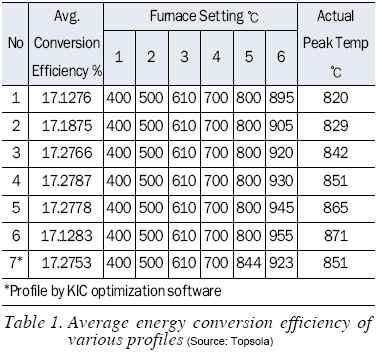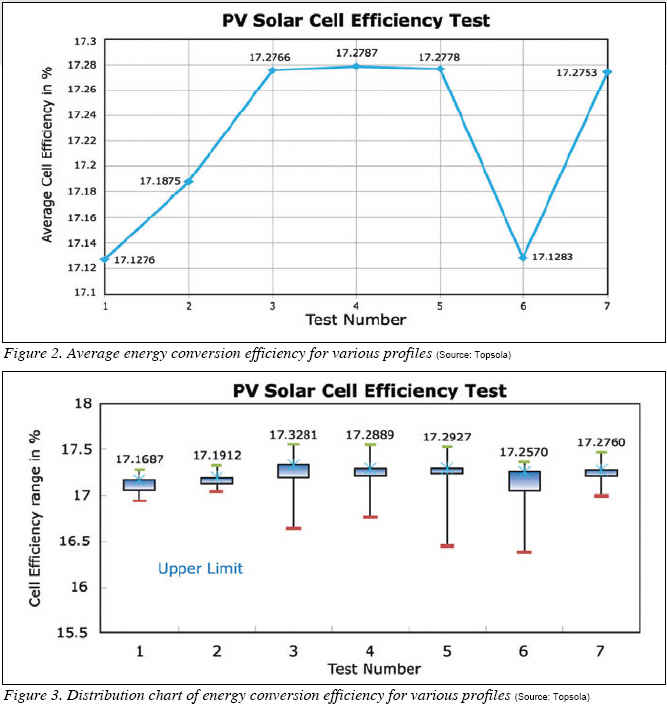By Crystal Han, Ben Sun
Principle of Experiment
After selecting the initial furnace setpoints, the actual profile on the surface of the crystalline silicon solar cell was measured and recorded using KIC’s SunKIC profiler. By methodically selecting new furnace setpoints and analyzing the resulting profile characteristics and their respective energy conversion efficiency, the process window and optimal profile can be determined using the profiler software. The energy conversion efficiency of each cell will be calculated.
Material and Equipment List
-Silicon solar cell: 125 x 125 mm
-Aluminum paste: All samples use the same type of aluminum paste
-Silver paste: Front side Heraeus CL80-9235HL; rear side Heraeus SOL230S
-Printer: ASYS
-Furnace: Despatch CF7210
-Profiler: KIC SunKIC

Experiment
A reference or base profile was selected to fire 30 pcs of solar cells. The average efficiencies were then computed. The final heating zone of the furnace was varied manually to develop different profiles. For each unique profile, 30 cells were fired. Table 1 shows the results of six different profiles. The 7th profile was determined by KIC’s Spectrum optimization software. Figure 1 depicts the average cell efficiency for each set of 30 cells fired at the listed furnace setpoints. The actual peak measured temperature also is displayed.


Analysis and Discussion
The box chart shown in Figure 2 depicts the results of the average energy conversion efficiency of solar cells fired at different profiles. We can see that result using profile 3, 4, 5 and 7 had a higher efficiency and less variation. From Table 1, we can see that the average peak temperatures were 842~865°C. This is the peak temperature process window for firing such paste.
The optimized profile 7 in Figure 3 has a 0.15% higher efficiency than the initial profiles. It also has better stability as compared to profiles 3, 4, 5 and 6. This reduces the number of lower efficiency cell produced, hence improving the productivity and cost at Topsola’s factory in Suzhou, China.
In summary, the accurate measurement of the cell profiles and optimization of the furnace’s temperature settings during production play an important role in process control. Frequent tracking on the furnace’s temperature, collecting and analyzing measurement data can help optimize the firing process and find a suitable process window. The end result is the production of higher efficiency cells, stable production quality and reduced production cost.
Crystal Han has 5-year working experience in the PV industry. 3 years with Heraeus as a Technical Sales Engineer and 2 years as a Technical Engineer at Chinalight, a cell manufacturer.
Ben Sun has 2-year experience with Heraeus as a Process Engineer.
For more information, please send your e-mails to pved@infothe.com.
ⓒ2010 www.interpv.net All rights reserved. |



